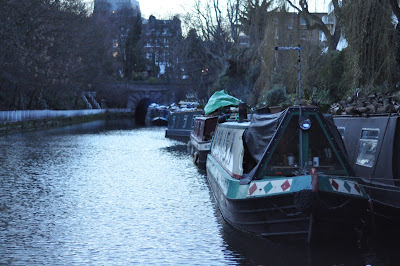When I started this blog I said I'd try to post once a week. You may have noticed that it's been a little longer than seven days since my last post (it's been seven months), but I'm going to be better from now on. I almost finished that sentence with 'I promise', but given my previous record, I think that's unwise. Let's just say I'll do my best.
So, what to write about in this monumental comeback post? In the last couple of months I've visited Margate, Oslo, Cornwall, Johannesburg and the Loire Valley, so it's tempting to start straight in on one of those exciting places, but I'm going to resist and write about the Affordable Art Fair instead because it's only on for a few days and Margate, Oslo, Cornwall, Johannesburg and the Loire Valley aren't going anywhere. (That said, though, there are incarnations of the Affordable Art Fair all over the world – if you miss this one in Hampstead, which finishes on 4 November, you could always catch the next one, which takes place in Seattle next week.)
The Affordable Art Fair has been running since 1999, but Wednesday evening was my first ever visit. I think I've unconsciously avoided it in the past because I knew I'd just feel bad about being surrounded by lots of lovely art that I could nearly, but not quite, afford. And it turns out I was right – that's exactly how I felt on Wednesday.
That's not to say I didn't enjoy myself however. There's masses of fantastic stuff to see, including of course plenty that's genuinely affordable, my own personal lack of resources notwithstanding (prices range from £40 to £4,000 and while there's not too much on offer right at the bottom of that scale, if you're in the market for a small framed print or photograph and are willing to spend up to a couple of hundred quid, there's lots to tempt you).
It would foolish of me to try to draw any conclusions about the state of the affordable art market from a couple of hours spent in the company of 100 exhibiting contemporary galleries, but I did notice a couple of themes appearing as I wandered.
It seemed to me that London was more featured than anywhere else, but I suspect that's just because lots of the galleries exhibiting assume that London art collectors are more interested in their own surroundings than other places. If so, they're probably right – typical bloody Londoners, eh?
In fact, there were so many sculptures of dogs that I felt like I spent the entire evening doing double takes. The point at which I strolled past the stall where an actual dog lay curled up its basket, oblivious to the action around it – and not for sale presumably – was when things got really confusing.
This is just a guess, but I'd put the popularity of these motifs at this particular level of the art market down to the fact that they're comprehensible enough not to be threatening to amateur collectors. Not everyone spending relatively modest sums at this sort of fair will be new to the art collecting game of course, but I'd hazard that lots of them are. The art world can be an intimidating place – I'd suggest that figurative pieces on familiar themes such as these may embolden people to begin collecting. And good for them, because once you've started down this path, there's no knowing where it may take you.
It would foolish of me to try to draw any conclusions about the state of the affordable art market from a couple of hours spent in the company of 100 exhibiting contemporary galleries, but I did notice a couple of themes appearing as I wandered.
The first is maps. There are loads of them, some straight up prints, some paintings and some more ambitious pieces, like this one in porcelain, which I love.
Lost Rivers: London 2/20 by Loraine Rutt (Byard Art, Cambridge)
Also well represented were paintings of birds, cut-outs of butterflies and life-size sculptures of dogs, like this one (please forgive the fact that the photograph is slightly out of focus – a woman with a glass of red wine was hoving into me as I was taking it).
 |
| Seated Hound by Clare Trenchard (Will's Art Warehouse, London) |
This is just a guess, but I'd put the popularity of these motifs at this particular level of the art market down to the fact that they're comprehensible enough not to be threatening to amateur collectors. Not everyone spending relatively modest sums at this sort of fair will be new to the art collecting game of course, but I'd hazard that lots of them are. The art world can be an intimidating place – I'd suggest that figurative pieces on familiar themes such as these may embolden people to begin collecting. And good for them, because once you've started down this path, there's no knowing where it may take you.












